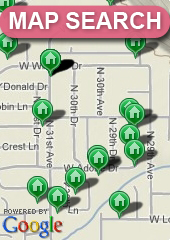

What is a 'Green' home anyway?
A green home means different things to different people depending upon their perspective and exposure to green technology. Whether your are a builder, home buyer, remodeler or just eco-conscious, each has their definition of just what makes a home green. Going green can start with little expenses by making simple changes to your life style to become eco-conscious. However, if you want to reduce your energy consumption thereby lowering your monthly utility bills, there are a number of ways to accomplish this. You can green your home starting with EnergyStar appliances then progressing to a high efficiency air conditioner or an extensive green remodeling project.
Identifying or classifying a home as green is not a straight forward task. If there were a single national or federal standard for measuring the energy efficiency, renewable energy used, eco-building materials and air quality, etc. of a home, comparing green homes would be easy. There is not a national standard at this time, although there are several standards and certifications such as LEED and HERS that are gaining respect and are can be useful when making a choice.
When building a home the most widely recognized standard is the LEED certification, Leadership in Energy and Environmental Design. LEED is a third-party certification program and the nationally accepted benchmark for the design, construction and operation of high performance green buildings. It provides a suite of standards for environmentally sustainable construction using system whereby points are assigned to various building materials, energy systems, water conservation, materials sources and building methods. When the final points tallied when the construction is completed, award a home several grades or certifications. Most cites now have some department for environmental building awareness. Some cities like Scottsdale are taking the lead in developing standards for eco-friendly building with their Green Building Program.
There are standards for energy efficiency such as the federal EnergyStar rating system which has been applied to most appliances and devices that consume energy in the home. The home itself can be analyzed for energy efficiency by an emerging industry that performs an intensive energy analysis of the home using sophisticated measuring equipment. A rating indicating the relative energy efficiency of a given home as compared with the HERS Energy-Efficient Reference Home as specified by the HERS Council Guidelines. There are air quality standards for the interior air quality, carbon foot print for building and remodeling, appliance energy efficiency standards, insulation ratings, reclamation methods for grey water, renewable building resources, reclaimed building materials, etc. Many of these will become standard building code in the next 20 years, just not today.


